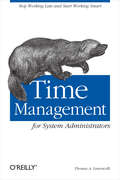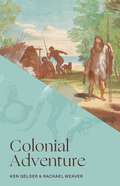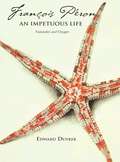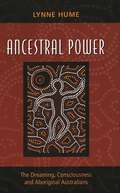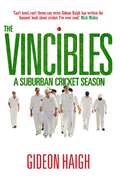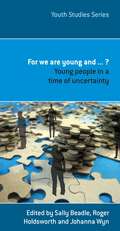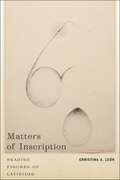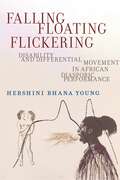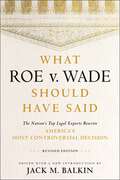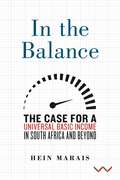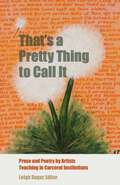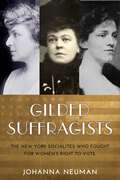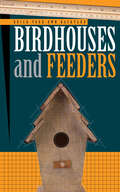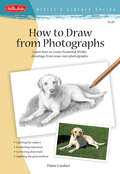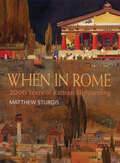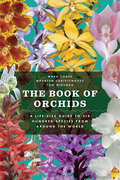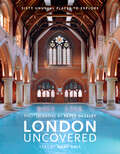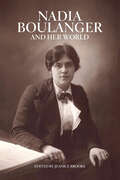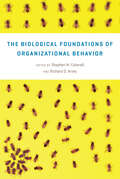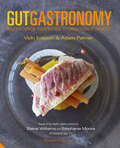- Table View
- List View
Time Management for System Administrators: Stop Working Late and Start Working Smart
by Thomas A. LimoncelliTime is a precious commodity, especially if you're a system administrator. No other job pulls people in so many directions at once. Users interrupt you constantly with requests, preventing you from getting anything done. Your managers want you to get long-term projects done but flood you with requests for quick-fixes that prevent you from ever getting to those long-term projects. But the pressure is on you to produce and it only increases with time. What do you do?The answer is time management. And not just any time management theory--you want Time Management for System Administrators, to be exact. With keen insights into the challenges you face as a sys admin, bestselling author Thomas Limoncelli has put together a collection of tips and techniques that will help you cultivate the time management skills you need to flourish as a system administrator.Time Management for System Administrators understands that an Sys Admin often has competing goals: the concurrent responsibilities of working on large projects and taking care of a user's needs. That's why it focuses on strategies that help you work through daily tasks, yet still allow you to handle critical situations that inevitably arise.Among other skills, you'll learn how to:Manage interruptionsEliminate timewastersKeep an effective calendarDevelop routines for things that occur regularlyUse your brain only for what you're currently working onPrioritize based on customer expectationsDocument and automate processes for faster executionWhat's more, the book doesn't confine itself to just the work environment, either. It also offers tips on how to apply these time management tools to your social life. It's the first step to a more productive, happier you.
Coping in Good Times and Bad: Developing Fortitude
by Erica FrydenbergNo one thinks about how well they're coping with life's daily stresses, until they're not. Coping in Good Times and Bad brings together what we know about coping so we can create a life of health, joy, satisfaction, resilience and wellbeing. 'Coping' and 'resilience' have become very commonly used words, especially in our COVID-impacted world, but what we need is a template for a good life. Decades of research, teaching and professional practice have provided psychologist Erica Frydenberg with intimate insight into how and why we cope well and not so well, and practical ways of developing and refining our coping strategies. Integrating coping with key proven ideas in contemporary psychology, such as emotional intelligence, mindset, mindfulness and grit, she goes beyond focusing on particular kinds of crisis (trauma, relationship breakdown, anxiety), and addresses the need for a framework that strengthens us through life, in good times and bad.
Colonial Adventure
by Ken Gelder Rachael WeaverAdventure was one of the grand narratives of colonisation, which saw European powers sending agents off to new and distant worlds. Their journeys didn't always follow a straight line. Some were shipwrecked, lost or marooned; adventure turned into misadventure. Others left the colony as soon as they arrived. Convicts fled to Timor, China, and South America, while bushrangers roamed the country, antagonising colonial authorities. But when adventurers directly served the interests of colonisation, they could be violent, ruthless, and brutally racist, rapaciously seeking profit and property. Many adventurers went wherever ambition took them, killing and dispossessing Aboriginal people and claiming ownership of their lands. By examining colonial adventure narratives in all their rawness and complexity, this book asks us to reflect on the continuing legacies of colonisation in Australia today.
Messages From Beyond: Spiritualism and Spiritualists in Melbourne's Golden Age
by Al GabayThe Spiritualist movement had its beginnings in the United States in the late 1840s and within a few years had spread to Australia. With its séances, mediums, trances, 'magnetisers', table-tilting and other mysterious psychic phenomena, it attracted media frenzy and public furore, but also many deeply serious converts—often highly intelligent and talented people who rejected orthodox religion in favour of scientific rationalism, but were still vitally concerned with moral debates. One of them was the young Alfred Deakin, later to become Prime Minister. Spiritualists sought 'rational, discoverable answers' to life's mysteries. They sought to 'prove' empirically the continued existence of the human personality after death, while maintaining—somewhat paradoxically—that the movement was a genuine religion. In Messages from Beyond , however, Al Gabay shows that for most believers the séance was not a 'scientific' enterprise but a religious and highly ritualised event. In this fascinating history, Gabay explores the origins of the Spiritualist movement and relates its rise and fall to the wider intellectual and religious currents in colonial Australian society. He argues that the atmosphere of Freethought and Secularism in colonial Melbourne, as well as the passionate debates of the time on the authority of the Bible and Evolution, were fundamental to the success of the movement, and that it was a cultural product of its time.
Francois Peron: An Impetuous Life
by Edward DuykerIn 1800 François Péron, an ambitious young medical student not long released from the French revolutionary army, gained a place as an assistant zoologist on Nicolas Baudin's expedition to Australian waters. As his colleagues either deserted or died, he would rise rapidly within the expedition's ranks and even write its official account. In doing so, Péron would seek to destroy Baudin's posthumous reputation. The expedition was famously marked by the vexed relationship between Péron and Baudin, but Péron's work, as a man of science, profoundly enhanced the achievements of the expedition: he seized valuable opportunities to pioneer zoological, oceanographic and ethnographic studies, and as an ecological observer was remarkably prescient. Edward Duyker's meticulously researched biography of Péron takes readers on an engaging and wide-ranging journey—from the heart of pre-revolutionary rural France, to the bitter fighting on the Rhineland front in 1793-94, to the late eighteenth-century Paris medical school, to landfalls in the Atlantic and the Indian Oceans, to the little-known shores of Van Diemen's Land and New Holland, and back into the very heart of Napoleon's Empire. This is both a balanced assessment of the difficult relationship between Péron and Baudin, and an analysis of the conduct of science during some of the most turbulent years in French history.
Russia's War Against Ukraine: The Whole Story
by Mark EdeleIn February 2022 Russia launched a full-scale invasion of Ukraine, a fellow East Slav state with much shared history. Mark Edele, a world authority on the history of the Soviet Union, explains why and how this conflict came about. He considers competing historical claims and arguments with authority and lucidity. His primary focus, however, is on the different paths taken by these two former members of the Soviet Union. Since the implosion of that state in 1991, Ukraine has developed a vibrant, if often troubled, democracy. For an increasingly dictatorial Russian political elite, including but not limited to Vladimir Putin, Ukraine has appeared more and more threatening. Humiliated by the degradation of Russia's international standing, feeling betrayed by an expanding NATO and anxious about democratic revolutions in the former Soviet space, Putin and his allies have increasingly retreated into a resentful ultra-nationalism. Dreams of past imperial glory stand in place of any attempt to solve the problems of the present.
Ancestral Power: The Dreaming, Consciousness and Aboriginal Australians
by Lynne HumeThe Dreaming, or the Dreamtime, is the English translation of a complex Aboriginal religious concept. It relates to the idea of an ancestral presence which exists as a spiritual power that is deeply present in the land. This presence or power also exists in certain paintings, in some dance performances, and in songs, blood and ceremonial objects. In Ancestral Power, Lynne Hume seeks to further our understanding of human consciousness by looking through a Western lens at the concept of the Dreaming. She examines the idea that Aboriginal people may have used certain techniques for entering altered states of consciousness. Could their experiences in such states, together with their extensive knowledge of their environment, have helped to create the cosmological scheme we call the Dreaming? With these questions in mind, she brings together and examines, for the first time, a wide range of existing literature on Aboriginal cosmology and spiritual practices, together with studies of Aboriginal art, data from anthropologists and ethnomusicologists, and statements by Aboriginal people from many different regional areas of Australia. Much of the information she highlights is little known. Ancestral Power suggests that Aboriginal spirituality is much more complex and compelling than the early missionaries could ever have imagined.
Vincibles: A Suburban Cricket Season
by Gideon HaighMeet Moof, Womble, Castaway, Churchyard and One Dad, a dog called Six Bits and a van known as the Bog Roll Express. Every summer weekend, the parks of Australia turn themselves over to countless thousands of club cricket matches. One of those clubs is the Yarras. This is the inside story of their most memorable season, told by the vice-president, chairman of selectors, newsletter editor, trivia-night quizmaster, karaoke impresario and club greyhound shareholder, Gideon Haigh. The Vincibles is about playing for love, winning with grace, losing with humour, valuing your community, and other anachronistic notions. It features 69 ducks and 257 dropped catches.(Not that we're counting.) The spirit of cricket isn't dead. It's just upped and moved to the suburbs.
For We Are Young And . . . ?: Young People in a Time of Uncertainty
by Johanna Wyn Roger Holdsworth Sally BeadleFor we are young and . . . ? offers a provocative perspective on Australia's young people against a global and local backdrop of uncertainty and change. It asserts the importance of a critically informed and positive approach to youth, moving beyond seeing young people through the lens of shortcomings and problems to be solved. For we are young and . . . ? draws directly on the work of the Youth Research Centre at The University of Melbourne and its legacy of innovative and significant research on young Australians. Opening with the theoretical context of youth research, the book draws on contemporary examples to discuss new conceptual and research approaches; the ways in which young people participate in change and the challenges and possibilities that are presented by current conditions. For we are young and . . . ? identifies emerging issues and future directions for youth research, policy and professional practice.
Matters of Inscription: Reading Figures of Latinidad
by Christina A. LeónA compelling exploration of materiality and semiotics in Latinx inscriptionsWriters and artists from Cuba, Puerto Rico, and Latinx New York operate under the pressures of inscription: the material and semiotic entanglement of making a mark as a marked artist. By employing layered material tropes and figures, such as stone, dust, viscera, and animality, their works do not represent a singular Latinx experience and instead, must be read at the margin of language and matter. Matters of Inscription explores feminist and queer inscriptions of Latinidad, encompassing the intersections of materiality and semiotics in art, performance, poetry, plays, and fiction. By delving into these figural matters, Christina A. León highlights how writers and artists such as Zilia Sánchez, Ana Mendieta, Manuel Ramos Otero, María Irene Fornés, Justin Torres, and Roque Salas Rivera forge material inscriptions that transcend individual lives and call for a broader analytical perspective unmoored from biographical anchors.The book urges readers to reevaluate the notion of difference, which has momentarily sought solace in identitarian terminology. León engages in rhetorical analysis that reassesses how the terms of Latinx studies have been challenged and how they are failing. Rather than categorizing texts based on predetermined taxonomic terms or individual subjects’ lives, the book tracks figures situated at the edges of materiality and semiosis. This approach addresses the continuous marginalization and dispossession that shape the phenomenon of Latinx identity (“latinidad”) by recentering conceptual questions of origin, diaspora, pedagogy, and belonging. The book contends that losses and deprivations should be rendered incommensurate to avoid collapsing the richness of different experiences or scales of ontological debasement.By focusing on the interplay of materiality and semiotics, Matters of Inscription challenges conventional approaches that seek to homogenize and anticipate what Latinx might mean and instead calls for a more capacious and nuanced analysis that goes beyond individual biographies.
Falling, Floating, Flickering: Disability and Differential Movement in African Diasporic Performance (Crip #7)
by Hershini Bhana YoungInsists on the importance of embodiment and movement to the creation of Black socialityLinking African diasporic performance, disability studies, and movement studies, Falling, Floating, Flickering approaches disability transnationally by centering Black, African, and diasporic experiences. By eschewing capital’s weighted calculus of which bodies hold value, this book centers alternate morphologies and movement practices that have previously been dismissed as abnormal or unrecognizable. To move beyond binaries of ability, Hershini Bhana Young traverses multiple geohistories and cultural forms stretching from the United States and the Mediterranean to Sierra Leone, Nigeria, and South Africa, as well as independent and experimental film, novels, sculptures, images, dance, performances, and anecdotes. In doing so, she argues for the importance of differential embodiment and movement to the creation and survival of Black sociality, and refutes stereotypic notions of Africa as less progressive than the West in recognizing the rights of disabled people. Ultimately, this book foregrounds the engagement of diasporic Africans, who are still reeling from the violence of colonialism, slavery, poverty, and war, as they gesture toward a liberatory Black sociality by falling, floating, and flickering.
What Roe v. Wade Should Have Said: The Nation's Top Legal Experts Rewrite America's Most Controversial Decision, Revised Edition
by Jack M. BalkinA unique introduction to the constitutional arguments for and against the right to abortionIn January 1973, the Supreme Court’s opinion in Roe v. Wade struck down most of the country's abortion laws and held for the first time that the Constitution guarantees women the right to safe and legal abortions. Nearly five decades later, in 2022, the Court’s 5-4 decision in Dobbs v. Jackson Women's Health Organization overturned Roe and eliminated the constitutional right, stunning the nation. Instead of finally resolving the constitutional issues, Dobbs managed to bring new attention to them while sparking a debate about the Supreme Court’s legitimacy.Originally published in 2005, What Roe v. Wade Should Have Said asked eleven distinguished constitutional scholars to rewrite the opinions in this landmark case in light of thirty years’ experience but making use only of sources available at the time of the original decision. Offering the best arguments for and against the constitutional right to abortion, the contributors have produced a series of powerful essays that get to the heart of this fascinating case. In addition, Jack Balkin gives a detailed historical introduction that chronicles the Roe litigation—and the constitutional and political clashes that followed it—and explains the Dobbs decision and its aftermath.
In the Balance: The Case for a Universal Basic Income in South Africa and Beyond
by Hein MaraisExamines the need and prospects for a UBIAs jobs disappear and wages flat-line, paid work is an increasingly fragile and unattainable basis for dignified life. This predicament, deepened by the COVID-19 pandemic, is sparking urgent debates about alternatives such as a universal basic income (UBI). Highly topical and distinctive in its approach, In the Balance: The Case for a Universal Basic Income in South Africa and Beyond is the most rounded and up-to-date examination yet of the need and prospects for a UBI in a global South setting such as South Africa. Hein Marais casts the debate about a UBI in the wider context of the dispossessing pressures of capitalism and the onrushing turmoil of global warming, pandemics and social upheaval. Marais surveys the meaning, history and appeal of a UBI before even-handedly weighing the case for and against such an intervention. The book explores the vexing questions a UBI raises about the relationship of paid work to social rights, about prevailing notions of entitlement and dependency, and the role of the state in contemporary capitalism. Along with cost estimates for different versions of a basic income in South Africa, it discusses financing options and lays out the social, economic and political implications. This incisive new book advances both our theoretical and practical understanding of the prospects for a UBI.
That's a Pretty Thing to Call It: Prose and Poetry by Artists Teaching in Carceral Institutions
by Leigh SugarFrank, eye-opening writing by "arts in corrections" educatorsPoetry and prose by artists, writers, and activists who’ve taught workshops in U.S. criminal legal institutions, including acclaimed writers Ellen Bass, Joshua Bennett, Jill McDounough, E. Ethelbert Miller, Idra Novey, Joy Priest, Paisley Rekdal, Christopher Soto, and Michael Torres; the late arts in corrections pioneers Buzz Alexander and Judith Tannenbaum; and Guggenheim Award-winning choreographer Pat Graney. These educators demonstrate a diverse range of experiences. Among the questions they ask: Does our work support the continuation or deconstruction of a mass incarcerating society? What led me to teach in prison? How do I resist the “savior” or “helper” narrative? A book for anyone seeking to understand the prison industrial complex from a human perspective. All author royalties from this book will be donated to Dances for Solidarity, a project that brings arts opportunities to people incarcerated in solitary confinement.
Gilded Suffragists: The New York Socialites who Fought for Women's Right to Vote
by Johanna NeumanNew York City’s elite women who turned a feminist cause into a fashionable revolutionIn the early twentieth century over two hundred of New York's most glamorous socialites joined the suffrage movement. Their names—Astor, Belmont, Rockefeller, Tiffany, Vanderbilt, Whitney and the like—carried enormous public value. These women were the media darlings of their day because of the extravagance of their costume balls and the opulence of the French couture clothes, and they leveraged their social celebrity for political power, turning women's right to vote into a fashionable cause.Although they were dismissed by critics as bored socialites “trying on suffrage as they might the latest couture designs from Paris,” these gilded suffragists were at the epicenter of the great reforms known collectively as the Progressive Era. From championing education for women, to pursuing careers, and advocating for the end of marriage, these women were engaged with the swirl of change that swept through the streets of New York City. Johanna Neuman restores these women to their rightful place in the story of women’s suffrage. Understanding the need for popular approval for any social change, these socialites used their wealth, power, social connections and style to excite mainstream interest and to diffuse resistance to the cause. In the end, as Neuman says, when change was in the air, these women helped push women’s suffrage over the finish line.
Build Your Own Backyard: Birdhouses and Feeders
by Ken BeckDiscover the fun and excitement of backyard birding with this great family activity! Filled with easy-to-follow detailed plans, Build Your Own Backyard Birdhouses and Feeders is a must-have for woodworkers, birding enthusiasts, and hobbyists. Build Your Own Backyard Birdhouses and Feeders features plans in a variety of styles, from very simple to a bit more challenging; full-color, detailed illustrations and step-by-step instructions to guide every step; and a complete materials list that notes everything needed to complete the project. You can always buy a birdhouse or feeder, but making one with your own hands is sure to increase your enjoyment of this fascinating backyard hobby.
How to Draw from Photographs: Learn How to Create Beautiful, Lifelike Drawings from Your Own Photographs (Artist's Library Series)
by Diane CardaciYou&’ve captured a moment in time—now learn to draw it! Discover the ins and outs of using a very modern tool to help with a timeless art. Photographs are valuable reference tools that most artists use. Complex subjects are generally easier to draw from photos—plus other factors, such as weather, movement, and lighting, can make drawing from life nearly impossible. Children and animals, for example, rarely sit still when you want them to, making it much easier to draw them from photographs. However, many beginning artists aren&’t confident in their picture-taking skills, or they don&’t know how to translate their photos into drawings. That&’s where this innovative book comes in! In no time, beginning artists will be drawing animals, people, landscapes, and still lifes that look real enough to reach out and touch!
When in Rome: 2000 Years of Roman Sightseeing
by Matthew SturgisThis “dashing chronicle” reveals what tourists have been visiting in Rome, from the era of the Roman Republic to contemporary times (The Independent).There is no place like Rome. Throughout its long, long history, its many changes in form and fortune, Rome has always been a tourist centre. In every age—Classical, Christian, Medieval, Renaissance, Baroque, Neoclassical, Romantic, Modern—people have flocked to see its wonders. This is the story of what Rome’s visitors have looked at over the past two thousand years, the buildings, the statues, the paintings, the artifacts that have most impressed each generation of travellers from the time of the Roman Republic in the second century BC up to the present age of mass tourism. It is the history both of how Rome has changed with the centuries and how the taste of those who have visited the city has changed with it.
The Book of Orchids: A Life-Size Guide to Six Hundred Species from Around the World
by Tom Mirenda Mark Chase Maarten Christenhusz“Clear, informative text. It is a superb production, reminding us of the astonishing diversity of these plants.” —Times Literary SupplementOne in every seven flowering plants on earth is an orchid. Yet orchids retain an air of exotic mystery—and they remain remarkably misunderstood and underappreciated. The orchid family contains an astonishing array of colors, forms, and smells that captivate growers from all walks of life across the globe. Though undeniably elegant, the popular moth orchid—a grocery store standard—is a bland stand-in when compared with its thousands of more complex and fascinating brethren, such as the Demon Queller, which grows in dark forests where its lovely blooms are believed to chase evil forces away. Or the Fetid Sun-God, an orchid that lures female flies to lay their eggs on its flowers by emitting a scent of rancid cheese.The Book of Orchids revels in the diversity and oddity of these beguiling plants. Six hundred of the world’s most intriguing orchids are displayed, along with life-size photographs that capture botanical detail, as well as information about distribution, peak flowering period, and each species’ unique attributes, both natural and cultural. With over 28,000 known species, the orchid family is the largest and most geographically widespread of the flowering plant families. Including the most up-to-date science and accessibly written by botanists Mark Chase, Maarten Christenhusz, and Tom Mirenda, each entry in The Book of Orchids will entice researchers and orchid enthusiasts alike.“A luscious coffee-table tome.” —Nature
London Uncovered: Sixty Unusual Places to Explore (Unseen London Ser.)
by Mark DalyFilled with stunning color photos, a unique guidebook that opens the doors to sixty of London’s most intriguing lesser-known places: “A joy.” —Evening StandardFrom museums and places of worship to some of the most historic and ornate shops, houses, and hostelries, take a trip through the city’s hidden treasures and discover landmarks strange, gaudy, grand, and inventive. Describing the history and character of each place, this book uncovers a wealth of stories about an endlessly fascinating world capital. Discover:Historical Homes like the Charles Dickens Museum, Strawberry Hill House, and Kew Palace and the Royal Botanical GardensFood and Drink Spots like Ye Olde Cheshire Cheese, Smithfield Meat Market, and The Black FriarPalaces of Entertainment such as The Rivoli Ballroom, The All England Lawn Tennis and Croquet Club, and Gala Bingo Hall TootingPlaces of Worship including Westminster Cathedral, Welsh Baptist Chapel, Bevis Marks Synagogue, and Peace Pagoda Battersea ParkRemarkable Shops like LassCo Salvage, Truefitt and Hill, Steinway & Sons, and The Roof Gardens in KensingtonScience and Education Attractions like Kempton Steam Museum, Alexander Fleming Laboratory Museum, Old Operating Theatre Museum and Herb Garret, and Royal Institution of Great BritainInns of Court from The Honourable Society of Gray’s Inn to the Temple ChurchUnusual Museums including The Royal Airforce Museum, Churchill Museum and Cabinet War Rooms, Geffrye Museum of the Home, Musical Museum, and Wimbledon WindmillPraise for Peter Dazeley and Mark Daly’s Unseen London“A thrilling tour behind the closed doors of the capital city’s buildings.” —Daily Telegraph“Dazeley captures the atmosphere of each building to perfection.” —Daily Express“Fascinating.” —Fabric magazine
Nadia Boulanger and Her World (Bard Music Festival)
by Jeanice BrooksNadia Boulanger (1887–1979) was arguably one of the most iconic figures in twentieth-century music, and certainly among the most prominent musicians of her time. For many composers— especially Americans from Aaron Copland to Philip Glass—studying with Boulanger in Paris or Fontainebleau was a formative moment in a creative career. Composer, performer, conductor, impresario, and charismatic and inspirational teacher, Boulanger engaged in a vast array of activities in a variety of media, from private composition lessons and lecture-recitals to radio broadcasts, recordings, and public performances. But how to define and account for Boulanger’s impact on the music world is still unclear. Nadia Boulanger and Her World takes us from a time in the late nineteenth century, when many careers in music were almost entirely closed to women, to the moment in the late twentieth century when those careers were becoming a reality. Contributors consider Boulanger’s work in the worlds of composition, musical analysis, and pedagogy and explore the geographies of transatlantic and international exchange and disruption within which her career unfolded. Ultimately, this volume takes its title as a topic for exploration—asking what worlds Boulanger belonged to, and in what sense we can consider any of them to be “hers.”
The Biological Foundations of Organizational Behavior
by Stephen M. Colarelli and Richard D. ArveyIn recent years, evolutionary psychology and behavioral genetics have emerged as prominent theoretical perspectives within the social sciences. Yet despite broad levels of commonality between the disciplines—including an emphasis on adaptation, evolved mechanisms that guide behavior, and consequences of mismatch between these mechanisms and novel environments—studies that apply these perspectives on social behavior to organizations remain relatively rare.The Biological Foundations of Organizational Behavior brings together contributors who shed light on the potential that behavioral genetics and evolutionary psychology offer for studies of organizational behavior. In addition to examining the extant literature integrating these disciplines and organizational behavior, the book reconsiders a wide range of topics through the lens of biology within organizational behavior, including decision making, leadership and hierarchy, goals and collective action, and individual difference. Contributions also explore new areas of potential application and provide a critical assessment of the challenges that lie ahead. With accessible insights for scholars and practitioners, The Biological Foundations of Organizational Behavior marks a promising step forward in what is increasingly perceived to be an underdeveloped area of organizational behavior.
Gut Gastronomy: Revolutionise Your Eating to Create Great Health
by Vicki Edgson Adam Palmer“Dishes are satisfying and occasionally border on indulgent. . . . for those seeking better health, there is much here to consider and entice.” —Publishers WeeklyThis innovative book introduces a whole new way of eating with a unique plan developed specifically at Grayshott Spa, one of the world’s leading health spas.By focusing on digestive health as a route to true wellness, the Grayshott Plan helps to boost your energy and rebalance weight safely through a nutrient rich diet that will give you everything you need to face the demands of modern life.The Plan dispels the misguided notion of “detoxifying” through spartan, punitive regimes and instead focuses on regaining good health by eating the right foods to aid the body’s natural detoxification.The Plan can confidently recommend quality grass-fed red meats, fish, eggs, fermented foods, butter, avocado, and organic vegetables. This is not a plan of privation but a sensible and satisfying approach to food that brings you back to feeling great.The first section will introduce you to the Plan and provide information and meal plans for a short-term course to rest and repair your digestive tract. The Post-Plan information will show you more foods to introduce to your diet and keep your gut healthy.The recipe section contains 100 delicious meals split into breakfasts, soups, main meals, vegetable sides, salads and special occasions and includes delicious, satisfying and nourishing meals like:Baked eggs with tomatoes, peppers and chorizoPorchetta with plum and fig chutneyGrilled sole fillets marinated in ginger and tangerineCrayfish cakes with coconut and mango and many more
The Jam Maker's Garden: Grow Your Own Seasonal Preserves
by Holly FarrellGrow, preserve, and enjoy! “Truly the book to read if you have an interest in jams.” —Kitchen Garden magazineGrow your own vegetables, fruit, herbs, and flowers—and preserve the best homegrown ingredients in jams, chutneys, cordials, and sauces for months and even years to come! From planning the jam-maker’s garden to selecting the best varieties to grow; from sowing and planting to harvesting and foraging, to using tried and tested cooking methods to preserve the best flavor and quality, this book covers it all—and also includes fifty recipes for tasty jams, chutneys, and preserves that you’ll savor. “Farrell isn’t just a jam expert—she deftly covers curds, pickles, chutneys, ketchups and plenty more.” —Kitchen Garden magazine“One of the ever-increasing breed of gardener cooks, [Holly Farrell] is as much at home in the kitchen as in the garden. Her writing is simple yet enthusiastic: her explanations are clear and her eagerness is infectious. The photographs, by the accomplished Jason Ingram, are mouth-wateringly appealing.” —Sunday Times Ireland
Learning ActionScript 3.0: The Non-Programmer's Guide to ActionScript 3.0
by Rich Shupe Zevan RosserIn this book, authors Rich Shupe and Zevan Rosser share the knowledge they've gained from their years as multimedia developers/designers and teachers. Learning ActionScript 3.0 gives you a solid foundation in the language of Flash and demonstrates how you can use it for practical, everyday projects.The authors do more than just give you a collection of sample scripts. Written for those of you new to ActionScript 3.0, the book describes how ActionScript and Flash work, giving you a clear look into essential topics such as logic, event handling, displaying content, migrating legacy projects to ActionScript 3.0, classes, and much more. You will learn important techniques through hands-on exercises, and then build on those skills as chapters progress.ActionScript 3.0 represents a significant change for many Flash users, and a steeper learning curve for the uninitiated. This book will help guide you through a variety of scripting scenarios. Rather than relying heavily on prior knowledge of object-oriented programming (OOP), topics are explained in focused examples that originate in the timeline, with optional companion classes for those already comfortable with their use. As chapters progress, the book introduces more and more OOP techniques, allowing you to choose which scripting approach you prefer.Learning ActionScript 3.0 reveals:New ways to harness the power and performance of AS3Common mistakes that people make with the languageEssential coverage of text, sound, video, XML, drawing with code, and moreMigration issues from AS1 and AS2 to AS3Simultaneous development of procedural and object-oriented techniquesTips that go beyond simple script collections, including how to approach a project and which resources can help you along the wayThe companion web site contains material for all the exercises in the book, as well as short quizzes to make sure you're up to speed with key concepts. ActionScript 3.0 is a different animal from previous versions, and Learning ActionScript 3.0 teaches everything that web designers, GUI-based Flash developers, and those new to ActionScript need to start using the language.
